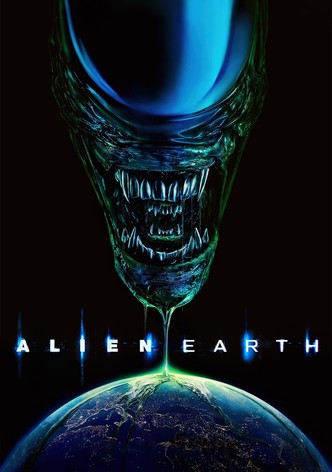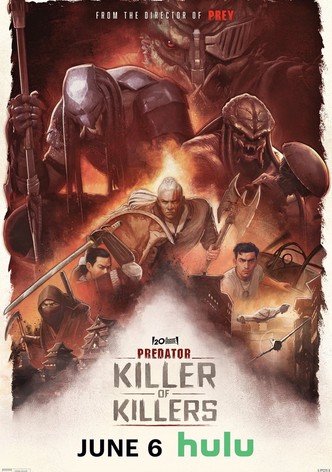Predator: Badlands has spent November tearing up the global box office. At the moment, the film, which stars Elle Fanning as a legless android alongside newcomer Dimitrius Schuster-Koloamatangi as her unlikely alien hunter companion, is sitting at the top of the franchise food chain on a prize of $160 million. It also had the strongest domestic and global opening in the series’s 40-year history, which is a huge payoff for the gambit 20th Century Studios took in theatrically releasing director Dan Trachtenberg’s Prey follow-up, which went straight to streaming in 2022.
Badlands also takes a big story risk: it’s the first Predator film to feature one of the titular warriors – a species commonly called Yautja – as a protagonist. In this case, Schuster-Koloamatangi’s Dek. Branded a ‘runt’ by his father, Dek escapes execution at the patriarch’s hands by crash-landing on the hostile planet Genna. There, he vows to prove himself a worthy hunter by slaying a fabled, unkillable beast called the Kalisk. This is where he runs into and begrudgingly teams up with Fanning’s Thia, a broken Weyland-Yutani synthetic from the Alien universe sent to Genna for reasons that become clearer as the film goes on.
This marks the first proper crossover (on film) between the Predator and Alien franchises since 2007’s Alien vs Predator: Requiem, and if you’ve had the unfortunate experience, like I have, of watching that mangled mash-up, you’ll know why. I’m happy to report that Badlands is worlds away from that low point – balancing high stakes, action-packed fun with dynamic characters and wonderfully fleshed-out worldbuilding. Its success hammers home the undeniable fact that fans of both Predator and Alien are eating well these days: Trachenberg’s Prey, Badlands, and animated offshoot Killers of Killers were critical and commercial successes for the former, and Romulus and Alien Earth have been equally well-received for the latter.
The absence of the Xenomorph stops Badlands from being the unofficial third AVP film, but the strong Weyland-Yutani presence makes the sci-fi properties even more intertwined. The sinister corporation’s activities on Genna could also inadvertently tell us a lot about what to expect from the future of Alien.
Predator: Badlands’ Ending, Explained
Dek and Thia team up to help each other achieve simple goals: Dek wants to kill the Kalisk, and Thia wants to recover her legs, which were severed by the creature. She also wants to find her ‘sister’ synthetic, Tessa, who is also played by Fanning. Unlike Thia’s perky curiosity, Tessa is a ruthless company woman, which eventually puts the twin androids on an ideological collision course when Tessa captures Dek, as well as the deadly Kalisk.
In a Weyland-Yutani mobile lab where Dek is held and experimented on, a conversation between Tessa and Thia reveals that their models have been programmed to feel empathy – a skill the company enabled to make them better understand the creatures they’ve been tasked with capturing. But Tessa determines that Thia’s attachment to Dek means she’s become defective and must be deactivated.
This betrayal solidifies Thia’s newfound allegiance with Dek, whose species is socially conditioned to be lone wolves. This is the narrative irony in his dynamic with Thia – she’s an artificial being programmed to feel too much; he’s an organic being programmed to feel too little.
Naturally, Dek’s character arc turns everything he’s been taught about what makes a ‘worthy’ Yauntja on its head. After Thia helps him escape capture, he utilises everything he’s learned about Genna and enlists alien allies – including Bud, who he realises is the Kalisk’s child – for a rescue mission. Storming the Weyland-Yutani HQ on Genna, he liberates Thia and reunites Bud with its parent. Sadly, their reunion is short-lived: Tessa destroys the Kalisk with cryoweapons she looted from Dek’s ship. She takes aim at Thia next, only for Dek and Bud to finally put her down.
The trio eventually return to Yauntja Prime, where Dek confronts and defeats his father in combat, directing an older, larger Bud to take his head. As the three of them square up to his father’s remaining clan, a huge ship appears, which Dek says is under his mother’s command.
How Predator: Badlands Could Tie Into Alien Earth - And The Wider Alien Franchise
Those who’ve seen Killer of Killers may have put the pieces together - that Dek’s mother is very likely the fierce, villainous matriarch whom a band of time-displaced human warriors fought in that handsomely animated film. While not directly linked to one another, Trachenberg’s trilogy of Predator films can easily be connected by way of the Yauntja’s time-travelling technology. But what about their link to the most recent piece of Alien media, the TV miniseries Alien Earth?
While they were released close together and Alien and Predator clearly take place in the same universe – Badlands being the strongest evidence of their interconnectedness yet – Alien Earth never references Predator. And yet, interestingly, Weyland-Yutani has the same M.O. in both Alien Earth and Badlands – capturing intergalactic species and bringing them back to Earth for experimentation. This isn’t unique to the FX show; the capitalist empire has been instructing its synthetics to bag Xenomorphs since the first Alien film, but across Alien Earth and now Badlands, it’s clear this mission has been supercharged and become far-reaching.
As both franchises ’ universes widen to include more and more weird and horrifying creatures, so does Weyland-Yutani’s appetite to have them under lock and key. Why? Probably the usual evil stuff, like power and money, but there are also scientific breakthroughs. A common thread among Alien’s egomanical human scientists and CEOs, from co-founder Charles Bishop Weyland to upstart company Prodigy’s Boy “Genius” Kavalier, is the pursuit of human immortality. On paper, it’s pitched as curing diseases and ageing, but in reality, it’s about achieving a state of godhood. Badlands’ Kalisk is hard to kill because it has incredible regenerative properties. That ability would be a huge boon to either company in pursuing that lofty goal, and certainly more useful than the Xenomorph’s acid blood and double-head situation.
So, while Badlands and Alien Earth don’t explicitly reference each other, they both reinforce Weyland-Yutani’s relentless interstellar goal, and put these governmental conglomerates front and centre in Alien’s growing mythos. Which planet will they set their sights on next? My money’s on that bizarre Howard the Duck one.
















































































































































































